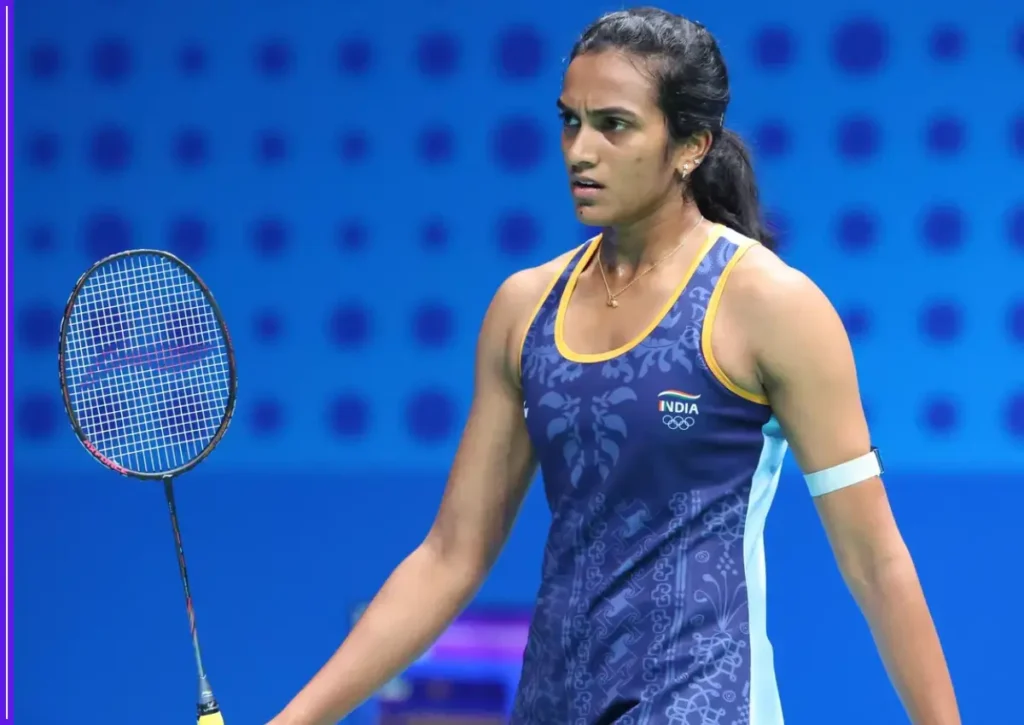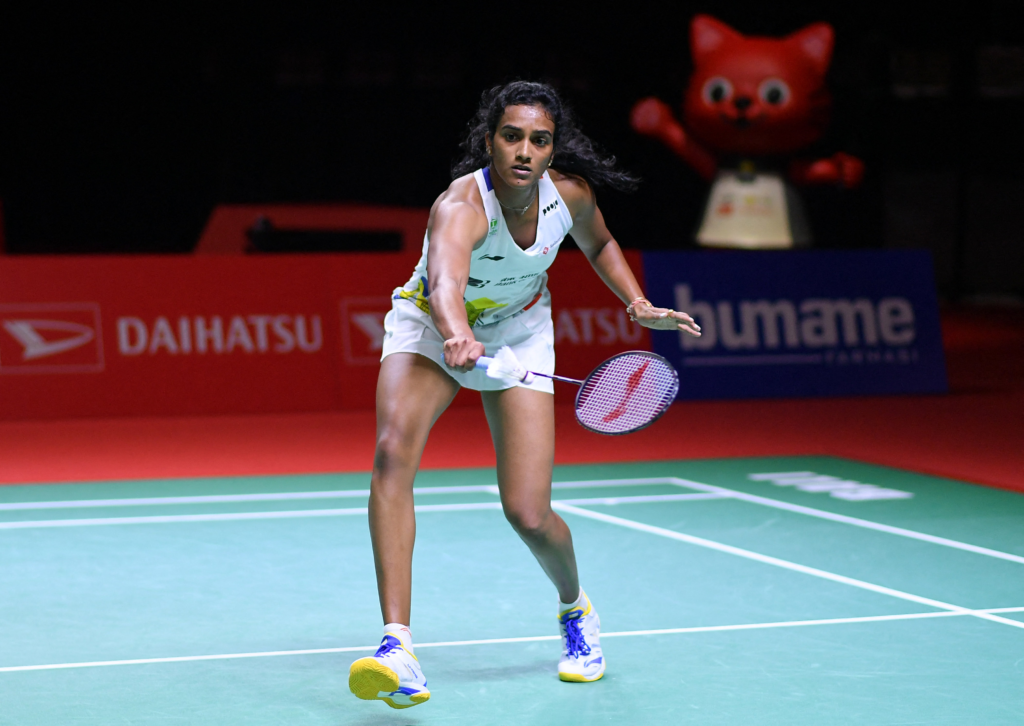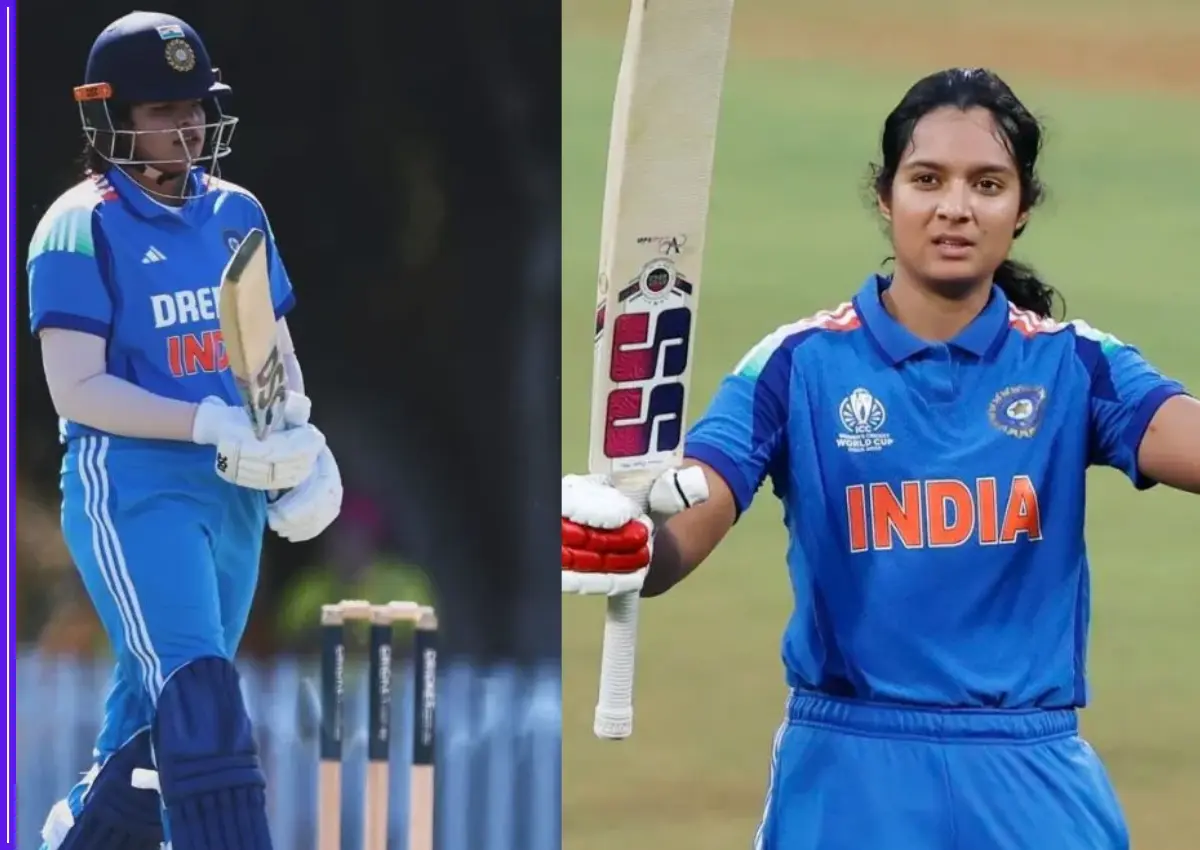Pusarla Venkata Sindhu(PV Sindhu), born on July 5, 1995, has become a household name in India and a global badminton icon. Her journey from a young girl in Hyderabad to an Olympic medalist and World Champion is a story of dedication, perseverance, and unparalleled skill.
Early Life and Training
PV Sindhu was born into a family with a strong sporting background. Both her parents were national-level volleyball players, with her father, P.V. Ramana, even winning a bronze medal at the 1986 Seoul Asian Games. Despite this volleyball lineage, Sindhu was drawn to badminton, inspired by the success of Pullela Gopichand, the 2001 All England Open Badminton Champion.

At the age of eight, Sindhu began her badminton journey under the guidance of Mehboob Ali at the Indian Railway Institute of Signal Engineering and Telecommunications in Secunderabad. Her dedication was evident from the start, as she would travel 56 km daily to attend coaching camps. This commitment caught the eye of Pullela Gopichand, who took her under his wing at the Gopichand Badminton Academy.
Early Career and Junior Success
Sindhu’s talent began to shine through in her early teens. In 2011, at the age of 16, she won gold at the Commonwealth Youth Games in the singles event. The following year, she achieved a significant milestone by winning the Asian Junior Championships, becoming India’s first-ever Asian junior champion in badminton.
Breaking into the Senior Circuit
Sindhu’s transition to the senior circuit was seamless. In 2012, at just 17 years old, she stunned the badminton world by defeating London Olympics gold medalist Li Xuerui at the China Masters Super Series tournament. This victory announced her arrival on the global stage.
The year 2013 marked Sindhu’s first major success at the senior level. She won a bronze medal at the BWF World Championships, becoming only the second Indian after Prakash Padukone to win a singles medal at the prestigious event. This achievement was a sign of things to come.
Olympic Glory

The 2016 Rio Olympics proved to be Sindhu’s breakout moment on the global stage. She became the first Indian badminton player to reach an Olympic final, eventually securing a silver medal after a hard-fought match against Spain’s Carolina Marin. This achievement made her the youngest Indian to win an individual Olympic medal.
Five years later, at the Tokyo Olympics in 2021, Sindhu added to her Olympic medal tally by winning bronze. This historic feat made her the first Indian woman to win two individual Olympic medals, cementing her status as one of India’s greatest athletes.
World Championship Dominance:
Sindhu’s success at the World Championships has been nothing short of extraordinary. She has won an impressive five medals at the event, including:
- Bronze in 2013
- Bronze in 2014
- Silver in 2017
- Silver in 2018
- Gold in 2019
Her gold medal victory in 2019 was particularly special, as she became the first Indian to win a gold medal at the BWF World Championships. This achievement underlined her status as one of the world’s premier badminton players.
Other Major Achievements
Sindhu’s medal cabinet is filled with accolades from various prestigious tournaments:
- Commonwealth Games: Gold (2022), Silver (2018), Bronze (2014)
- Asian Games: Silver (2018)
- BWF World Tour Finals: Gold (2018), Silver (2017, 2021)
- Asian Championships: Bronze (2014, 2022)
Her victory at the 2018 BWF World Tour Finals was particularly significant, as she became the first Indian to win the season-ending championship.
Playing Style and Strengths
Sindhu is known for her aggressive playing style and powerful smashes. Standing at 5 feet 10 inches (1.79 m), she has a significant reach advantage over many of her opponents. Her court coverage is exceptional, allowing her to retrieve difficult shots and turn defence into attack quickly.
Her mental strength is also a key asset, enabling her to perform consistently at the highest level and in pressure situations. This mental fortitude has been crucial in her success at major tournaments.
Impact on Indian Badminton and Sports:
PV Sindhu’s success has had a transformative effect on badminton in India. Her Olympic medals and World Championship victories have inspired a new generation of players to take up the sport. Badminton’s popularity in India has soared, with more young athletes choosing it as their primary sport.
Sindhu’s achievements have also brought significant attention and investment to badminton in India. Her success has led to increased funding for the sport and better facilities for aspiring players.
Off the court, Sindhu has become one of India’s most marketable athletes. She has numerous endorsement deals with major brands, making her one of the highest-paid female athletes in the world. In 2018, 2019, 2021, 2022, and 2023, she featured on Forbes’ list of Highest-Paid Female Athletes, with annual earnings ranging from $5.5 million to $8.5 million.
Awards and Recognition
Sindhu’s contributions to Indian sports have been widely recognized:
- Padma Bhushan (India’s third-highest civilian award)
- Rajiv Gandhi Khel Ratna (India’s highest sporting honor)
- Arjuna Award
- BBC Indian Sportswoman of the Year (2020)
These accolades reflect not just her sporting achievements but also her impact on Indian society as a role model and inspiration.
Challenges and Setbacks
Like any athlete, Sindhu has faced her share of challenges. She has dealt with injuries, including a stress fracture in 2015 that kept her out of action for nearly six months. She has also experienced form slumps and tough losses in major finals.
However, Sindhu’s ability to bounce back from these setbacks has been remarkable. Her resilience and determination have allowed her to overcome obstacles and return stronger, as evidenced by her consistent performances at the highest level.
Training and Preparation
Sindhu’s success is built on a foundation of rigorous training and meticulous preparation. Her daily routine involves hours of on-court practice, focusing on technique, strategy, and match situations. Off the court, she dedicates significant time to physical fitness, including strength training and cardiovascular exercises.
Nutrition plays a crucial role in her regimen, with a carefully planned diet to support her training and recovery. Mental conditioning is also a key aspect of her preparation, with meditation and visualization techniques helping her maintain focus and composure during high-pressure matches.
Future Prospects:
As Sindhu enters her late twenties, she remains one of the top badminton players in the world. Her focus is now on the 2024 Paris Olympics, where she will aim to add to her medal tally and potentially secure that elusive gold medal.
Beyond the Olympics, Sindhu’s goals include maintaining her dominance at the World Championships and other major tournaments. She also aims to inspire more young Indians to take up badminton and help elevate India’s status as a badminton powerhouse.
Conclusion
PV Sindhu’s journey from a young badminton enthusiast in Hyderabad to a global sporting icon is a testament to her talent, hard work, and determination. Her achievements have not only brought glory to India but have also inspired millions of young athletes across the country.
As she continues to compete at the highest level, Sindhu’s legacy is already secure. She has transformed the landscape of Indian badminton, broken numerous barriers, and set new benchmarks for success. Her impact extends beyond the badminton court, as she has become a symbol of excellence and a role model for aspiring athletes.









